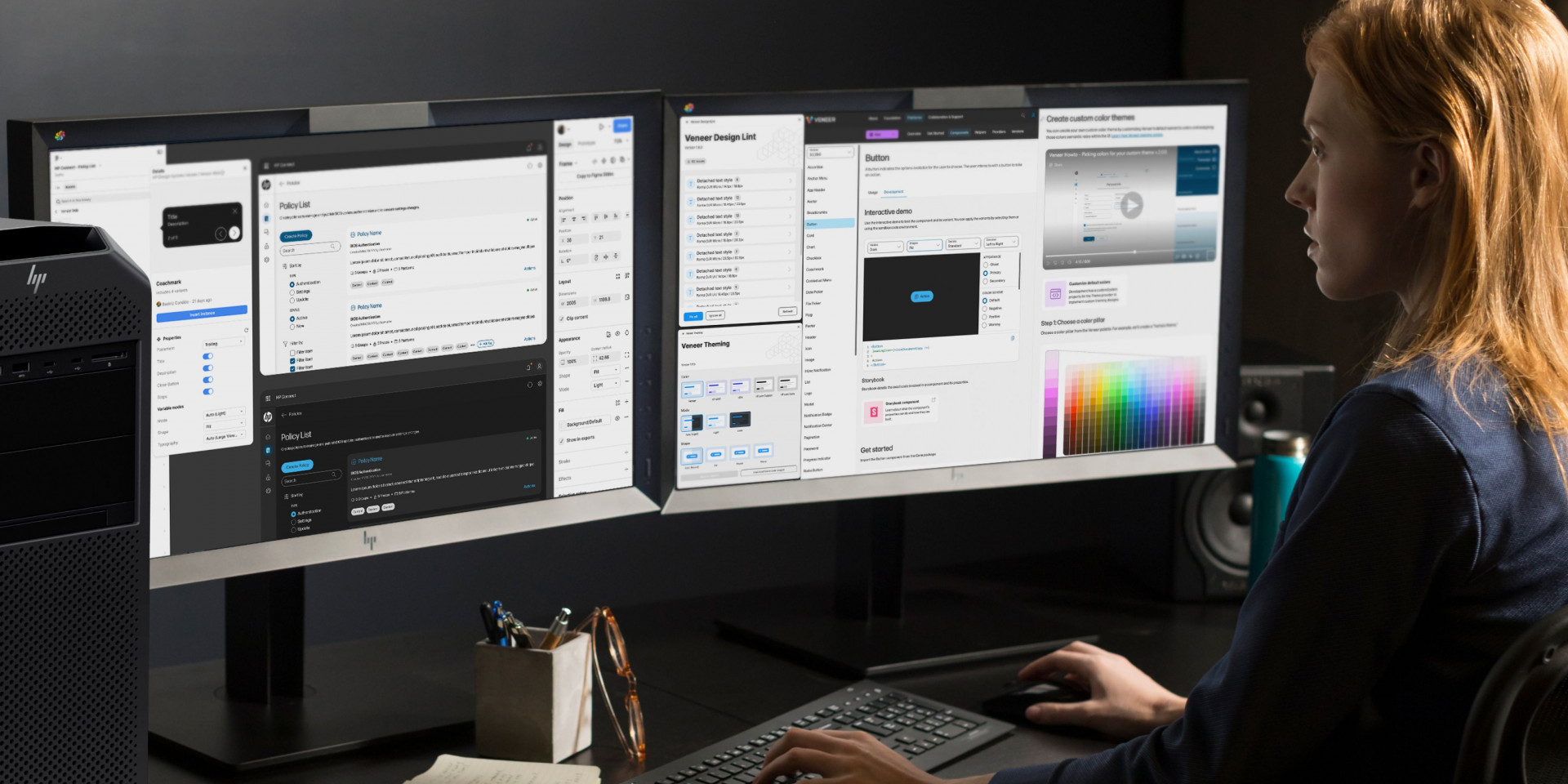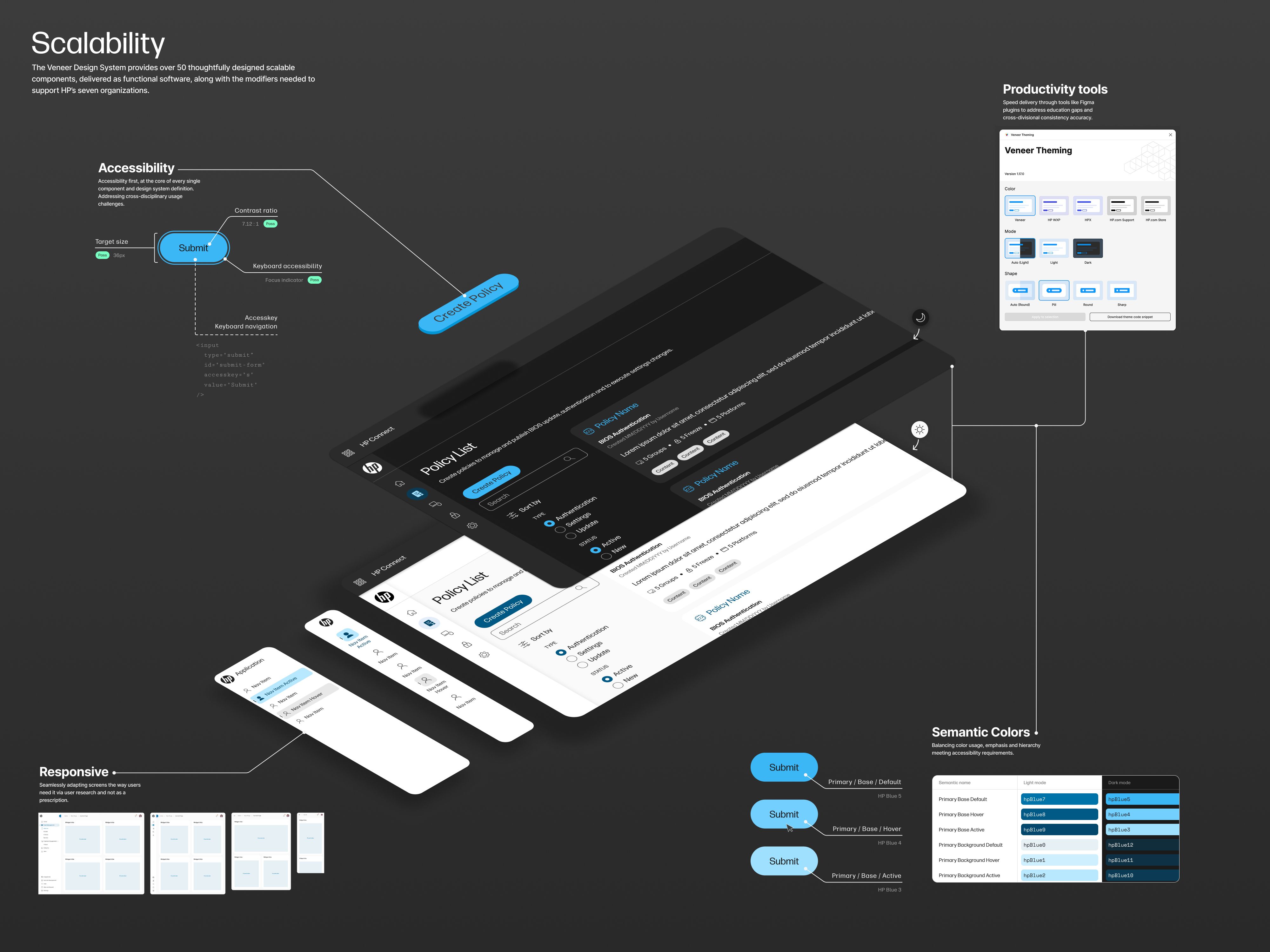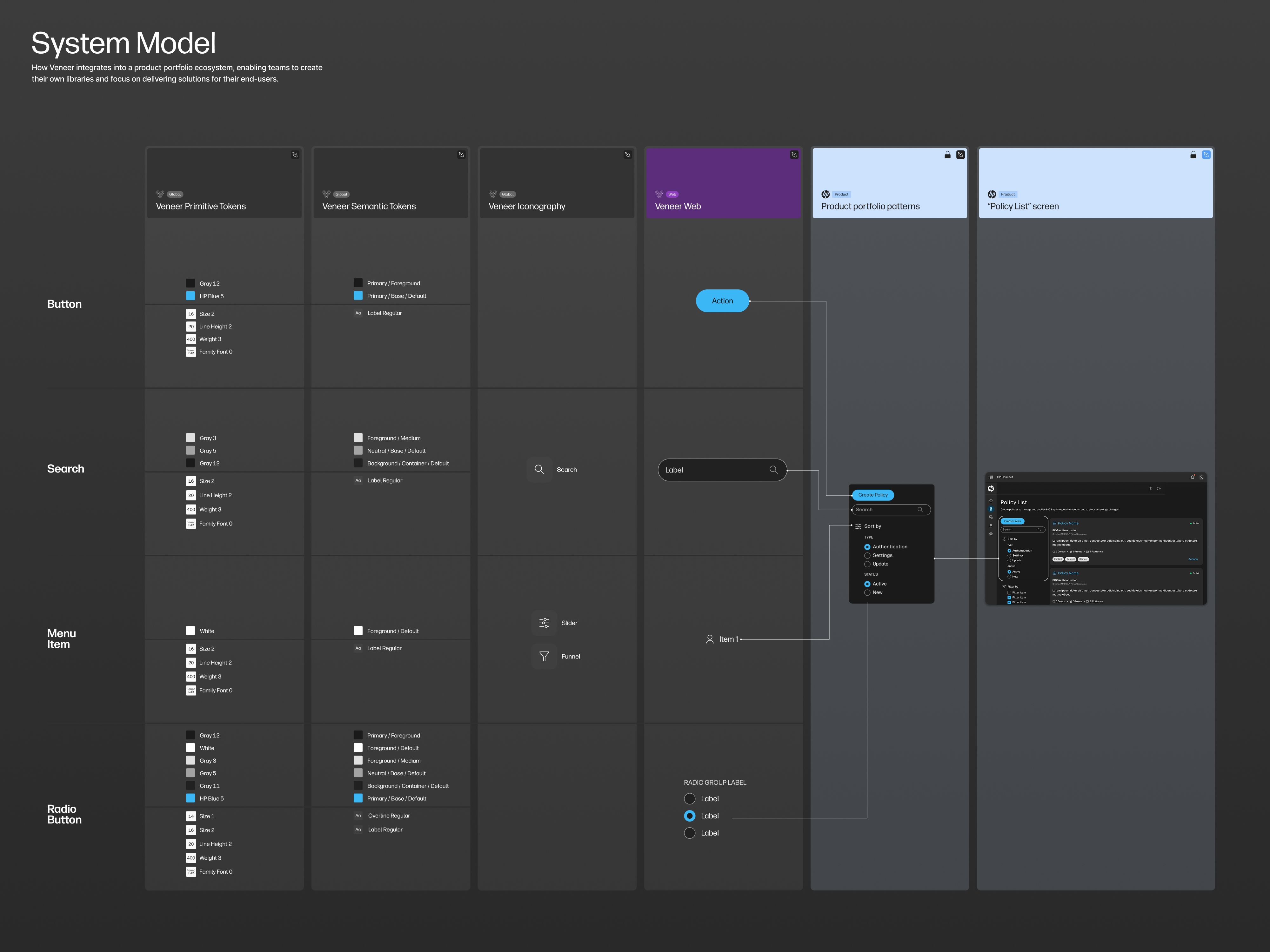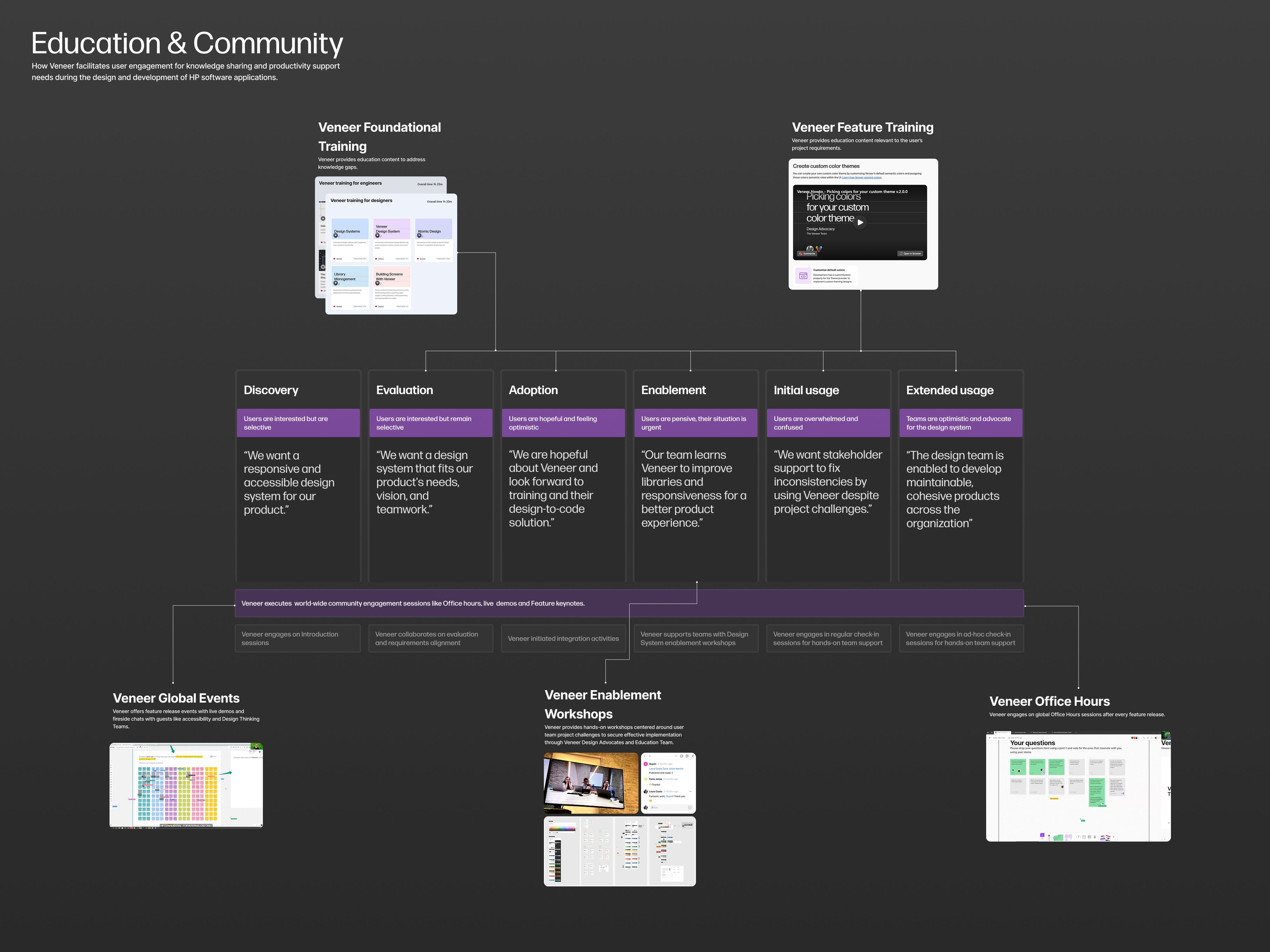
Designers
Jason Occhipinti, Vivian Yu, Aaron Schmelzer, Gilson Hoffmeister, Laura Costa, Daniel Marquez, Gustavo Callegari, Ivy Yu, James Rothbart, Lauren Schmidt, Quyen Nguyen, Anh Huynh, Sanaz Saadatifar, Andrei Garcia, Courtney McMillan
Year
2025
Category
Product
Country
United States
Design Studio / Department
HP Design System, Research and Governance (DSRG)

»HP Veneer is more than just an enterprise design system. It’s an organizational service designed for growth and influence. Based on years of internal research, the system delivers measurable results: 50% faster development, over $1 million in savings, and adoption by more than 300 teams. HP Veneer's strength lies in a combination of solid UI foundations and enablement infrastructure, including onboarding, community, documentation, and support. Accessibility is built in, consistency is enforced, and internal teams are empowered. HP Veneer is not just a design system; it’s a transformational service model that improves both UX quality and enterprise efficiency.«
UX Design Awards Jury 2025 Autumn
Three questions to the project team
What was the particular challenge of the project from a UX point of view?
Design systems weren’t well understood, so some teams didn’t utilize Veneer or weren’t aware of how to use it. Hesitant to use something they didn’t initially understand, one set of teams told us they couldn’t adopt Veneer, while another set had more knowledge but also technical limitations preventing them from adopting Veneer. Both sets gave Veneer opportunities to improve. First, we found that design system education should be embedded into Veneer’s user journey; we created materials and features focusing on usage and best practices so Veneer users could make better HP customer experiences. Second, the user limitations helped us adapt so that more teams could benefit, making a more inclusive, flexible design system for its community.
What was your personal highlight in the development process? Was there an aha!-moment, was there a low point?
Our collaboration with other teams increased Veneer’s visibility and helped it evolve. A cross-company team discovered Veneer and saw the benefits of adopting it; from their adoption, more teams learned about Veneer and chose to use it. Other HP teams improved the design system, although we had different approaches: We worked with these teams to design new component styles, but they preferred their own component styles that were difficult to systemically implement at scale. We built our respective libraries, and when Veneer delivered reusable components, the teams realized their knowledge gap about design systems. We built more than a quality product: we built knowledge. We learned to teach teams about reusability and scale.
Where do you see yourself and the project in the next five years?
With research-based decisions, Veneer will improve its design system education and future-proof its technology to continue supporting the community. We will continue to refine education materials, making them more accessible and easier to engage with. Veneer will help users connect to the resources they need, through localization plugins, imagery, and digital assets. These resources help break company siloes and enable creatives to expand their skills and knowledge. Veneer will also meaningfully integrate AI. Veneer has pre-made, reusable components, but software of the near future can adapt to learned user behaviors. Veneer hopes to create modular UI elements, so AI-generated user interfaces display tailored content.


